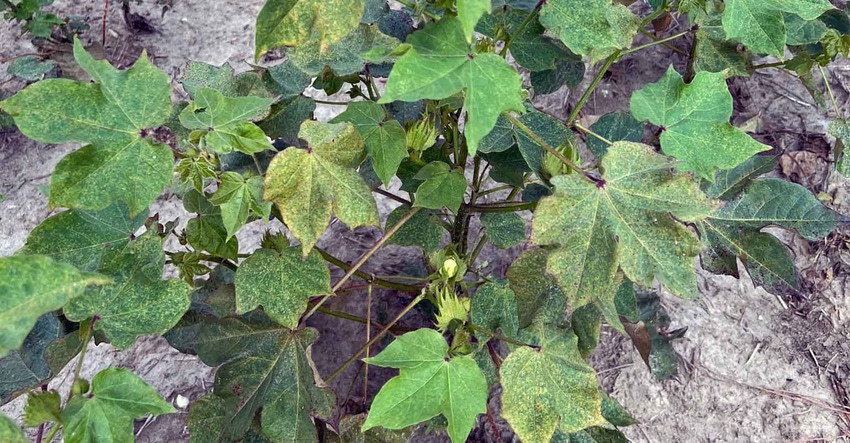July 8, 2022

With hot, dry sustained weather across the state, odd issues are showing up. A couple weeks ago, we had a rash of false chinch bug in some parts of the state. Fortunately, they didn’t amount to much injury on the plants and have dissipated with some of the rain we have caught.
However, spider mites have now taken hold and should be a considered for any insecticide applications we make going forward. Spider mites reproduce best on cotton that is stressed and reproduce more quickly in warm weather. We’ve had both!
Also, a fungus that often holds back spider mite populations thrives better in wet and humid conditions that we have been lacking. Hopefully this fungus shows up soon, but I have not heard of it yet.
First, it’s important we don’t make the spider mite problem worse with tarnished plant bug sprays. See our previous recommendations for how to avoid flaring pests at this point in the season. Products like Orthene are effective for plant bugs but tend to knock out beneficials.
Also, some insecticides, like imidacloprid (Admire), as well as others, can trigger an increase in the survival and number of eggs spider mites lay. If you have to treat, reach for a softer insecticide like Transform. Transform supplies are tight at the moment, and we have to make some hard decisions. An insecticide like Bidrin will kill natural enemies but has less potential to flare spider mites than Orthene, a pyrethroid, or a neonicotinoid (Admire, Centric, for example) and is effective for managing tarnished plant bugs.
If spider mites are an issue that needs to be treated, our threshold (listed in the NC Cotton Insect Scouting Guide) is general leaf discoloration, chlorosis, bronzing, or both, plus live mites over most of the field and defoliation from mites in 25% or more of the field.
If rain is imminent, delay treatment and reevaluate 3 to 4 days after the rain. If a miticide is used, 2 applications are sometimes necessary. An article published by a colleague at the University of TN does an excellent job of summarizing what miticides are effective.
Source: NC State University, which is solely responsible for the information provided and is wholly owned by the source. Informa Business Media and all its subsidiaries are not responsible for any of the content contained in this information asset.
You May Also Like




